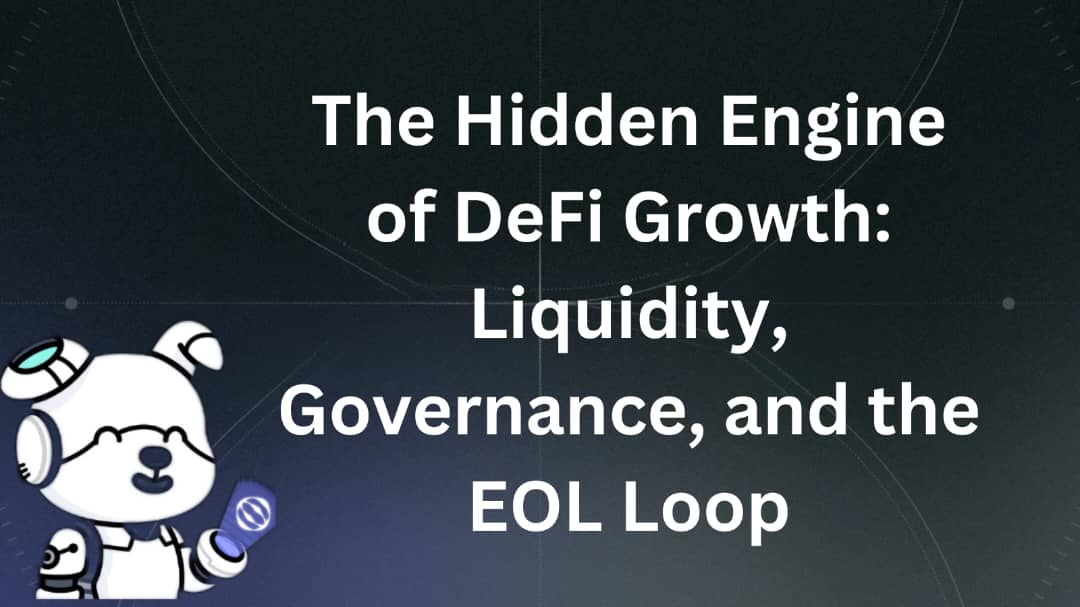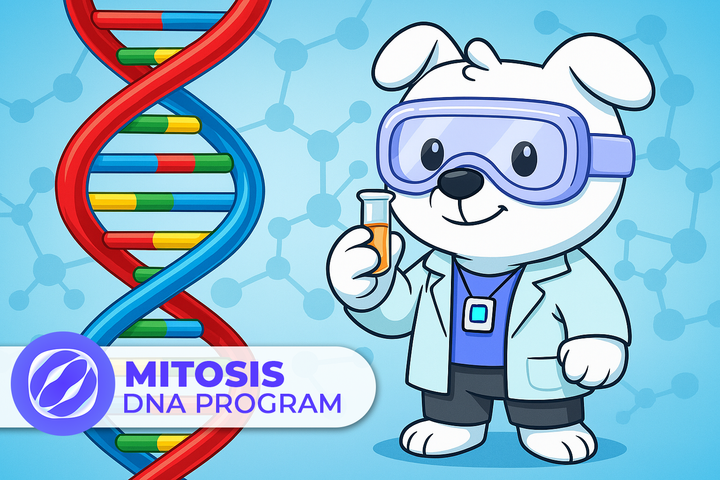The Hidden Engine of Defi Growth: Liquidity, Governance, and the EOL Loop

DeFi’s strength lies in its composability, the ability to stack protocols like building blocks to create entirely new financial experiences. But as the space matures, a new kind of flywheel is emerging at the intersection of liquidity, governance, and yield. At the heart of this transformation sits Ecosystem-Owned Liquidity (EOL) and a new player leading the charge: Mitosis.
In this article, we explore how the DeFi flywheel is evolving and how Mitosis is enabling a more sustainable, automated, and community-driven future for decentralized finance.
1.0. Liquidity Feeds Governance
Liquidity is the lifeblood of DeFi. It determines how easily users can trade, how efficiently protocols operate, and how attractive a platform is to both users and developers. But in the EOL model, liquidity isn’t just passive capital—it’s a governance tool.
When liquidity is owned by the ecosystem and governed by a DAO, the holders of that liquidity (the LPs) gain influence over which protocols it supports. Rather than chasing short-term incentives, LPs participate in decisions about which vaults to allocate capital to, how risks are managed, and how rewards are distributed.
This transforms the role of LPs from speculators into stakeholders, directly shaping the future of the ecosystem with their capital.
2.0. Governance Feeds Innovation
When governance is tied to capital, decisions are no longer disconnected from incentives. Mitosis makes this relationship explicit. Its EOL governance model enables LPs to vote on capital allocation, directly influencing which protocols receive liquidity support.
This fosters innovation in two ways:
- Protocols compete based on real value—not just marketing or short-term yield farming. They must disclose transparent strategies, risk parameters, and performance.
- LPs are incentivized to support long-term winners, knowing their yield depends on smart capital deployment.
This dynamic pushes protocols to innovate, evolve, and serve their users better—because good governance attracts good capital.
3.0. How Mitosis Powers a New Generation of DAO Tooling
DAOs are no longer just voting clubs—they’re evolving into on-chain institutions that manage treasuries, allocate capital, and govern multi-chain ecosystems. But most DAOs struggle with liquidity management. That’s where Mitosis steps in.
By integrating with Mitosis, DAOs gain:
- Access to multi-chain, yield-generating vaults without needing internal yield strategists.
- Automated allocation tools driven by on-chain metrics and community votes.
- Permissionless proposals from protocols seeking liquidity—with transparent performance-based selection.
This enables DAOs to act as intelligent capital allocators, not just governance forums. Treasury strategies become programmable. Yield becomes passive. And LPs don’t have to be DeFi experts to benefit.
Mitosis effectively turns DAO governance into capital management, giving members real influence and real returns.
4.0. The Positive Loop of EOL-Enabled Ecosystems
Most DeFi ecosystems are fragmented. Protocols compete for the same capital. LPs jump between pools for temporary yield. DAOs operate in silos. But in an EOL ecosystem, something powerful happens: everyone is on the same team.
Here’s how the flywheel works:
- Protocols plug into Mitosis, gaining access to shared liquidity pools.
- LPs earn diversified yields across multiple vaults with automated, data-driven allocation.
- Successful protocols gain more support through EOL governance votes.
- LPs grow more aligned with these protocols’ success—becoming governance participants, not just yield chasers.
- As more protocols and DAOs join, the system gains liquidity, influence, and innovation momentum.
This creates a self-reinforcing cycle:
Liquidity → Governance → Innovation → More Liquidity.
It’s a virtuous loop—a flywheel where incentives align, capital flows intelligently, and everyone benefits from collective growth.
Conclusion
The future of DeFi isn’t about isolated success stories. It’s about building systems where liquidity, governance, and yield work together in harmony—creating ecosystems that scale not just financially, but socially and technologically.
Mitosis and EOL represent the infrastructure for this future. Through automated capital management, transparent governance, and composable design, they transform LPs into stakeholders, DAOs into capital engines, and protocols into long-term collaborators.
The Composable DeFi Flywheel is already in motion. The only question is:
Will you help spin it?
Are you ready to be part of this transformation?



Comments ()